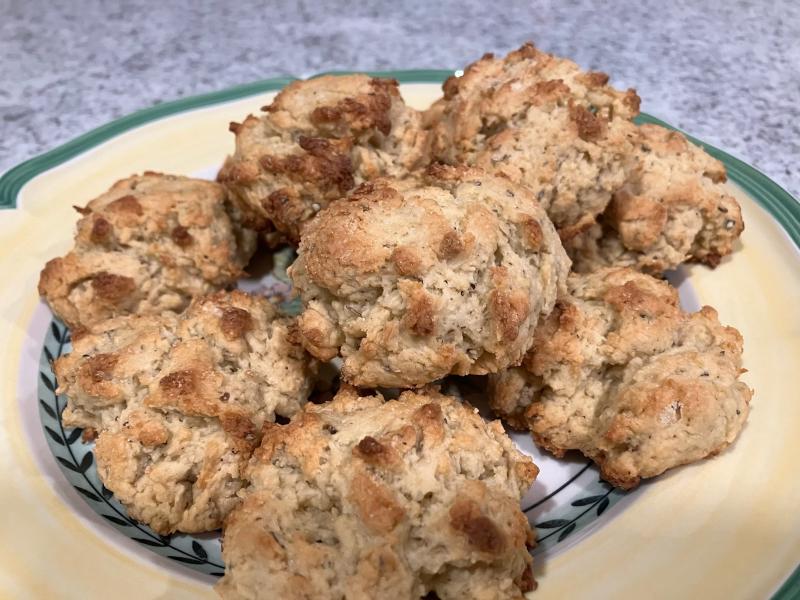Select the right dinner roll to suit any menu
As we look at the calendar for the days ahead, it’s time to start planning for Thanksgiving. The list of chores can be quite lengthy: ordering the turkey and floral centerpieces, buying vegetables for your family’s favorite side dishes, making the cranberry relish and baking pies for dessert. This is one meal where we typically forgo hors d’oeuvres, since there is already so much on the menu.
One item that’s often overlooked on my Thanksgiving menu is some sort of dinner roll. Partially because it’s a carb-forward choice I can omit, as well as the competition for oven space that makes it challenging to have them arrive at the table piping hot or at least still warm enough to melt butter. Still, when they’re not there, will your guests be looking for them? How did rolls become so popular?
According to food historians, who often call them “bread rolls,” most countries have their own version of a small, quickly prepared, typically round or oval-shaped flour and yeast concoction. They’re smaller, so they will proof and rise more quickly than the full-sized loaves of bread from which they emerged. Known across Europe as a bap or a bun, they have also come to be called a small bread or roll.
Over time, the differentiation between a roll and a bun (terms often used interchangeably) is that the former are either plain or savory, while the latter is often sweet. The other difference between the two is that rolls are often tucked together into a baking pan with their sides touching, to create a pull-apart effect, while buns are set on the baking sheet independently and become crustier.
Some familiar rolls include the French pistole, split down the middle of its oval shape to create a lobed effect. Clever bakers will showcase their skills with knotted rolls or other complicated shapes. The most common American roll is the Parker House roll, invented in Boston at the Parker House Hotel shortly after it opened in 1855. And we can’t overlook the slightly sweet Hawaiian rolls or the golden-colored Martin’s potato rolls.
Another favorite is the Kaiser roll (sometimes called a hard roll or Vienna roll), which takes its name from the German word for emperor because its shape resembles a crown. These light, crisp-crusted, poppy-seeded rolls were brought to this country by German and Jewish immigrants who served them for breakfast or for sandwiches. I can still remember Sunday morning trips to the bakery to collect them for our breakfasts, served with lots of butter.
Stepping back to our Turkey Day plans, let’s consider how to serve an interesting roll or other small bread. In the photo, we have Parmesan rosemary garlic scones, which have strong savory notes that will stand up well to your rich dinner menu. These can be assembled quickly, set out on the baking sheet to wait and then placed in the oven to bake while the turkey rests before carving.
Another option is a sage-leaf-decorated corn bread, another item that can be stirred together swiftly and baked in about 15 minutes. Finally, for the forgetful chef who didn’t plan on making rolls, try the mayonnaise rolls that need only three ingredients – just make sure you include a real mayonnaise, not a salad dressing, to ensure you have the right texture. Now we’re all set with bread rolls for Thanksgiving dinner.
Herbed Corn Bread
Preheat oven to 450 F. Place the butter in an 8-inch-square pan and put the pan in the oven while it’s preheating. Remove the pan once the butter has melted, and swirl the melted butter to completely coat the inside of the pan. Pour excess butter into a mixing bowl; set aside. Arrange sage leaves in a decorative pattern across the bottom of the pan with the tops of the leaves facing down; set aside. Add the egg and buttermilk to the butter in the mixing bowl; whisk to combine. Add dry ingredients and blend with a few swift strokes; do not overbeat. Spoon batter over the sage leaves in the pan. Bake for about 15 minutes; allow to cool for 5 minutes. To serve, invert the pan over a plate and release the cornbread from the edges.
Mayonaise Rolls
Preheat the oven to 375 F. Prepare a 12-cup muffin pan with paper liners. Place the flour in a medium bowl. Add milk and mayonnaise. Stir until combined. Spoon batter into the prepared pan about 2/3 full. Bake for about 15 minutes; allow to rest for 5 minutes before removing from pan.
Parmesan Rosemary Garlic Scones
Preheat oven to 400 F. Line a baking sheet with parchment paper; set aside. Combine flour, sugar, baking powder, baking soda, salt, rosemary, garlic and 1/2 C of Parmesan in a mixing bowl. Add the cold butter and use a pastry blender or your fingers to mix until a coarse crumb forms. Add the buttermilk and stir until just combined. Form the dough into a circle on baking pan and cut into wedges. Alternatively, drop the dough in rough balls and flatten slightly. Sprinkle the remaining 1/4 C grated Parmesan evenly over the tops. Bake until browned, about 15-20 minutes.





















































